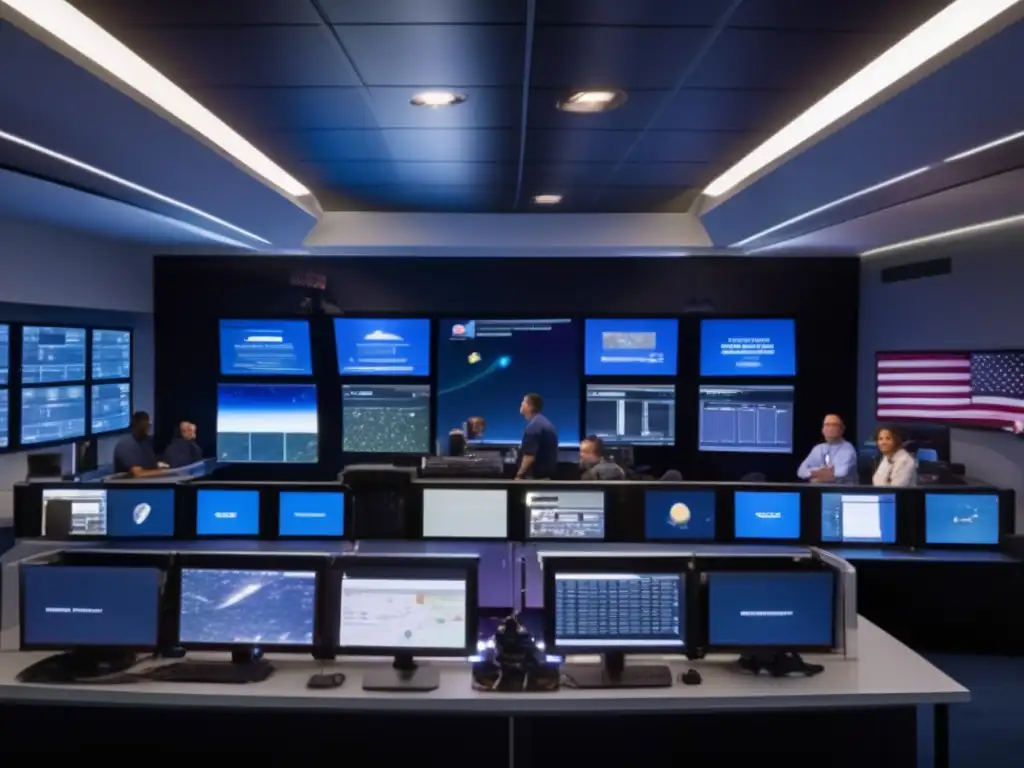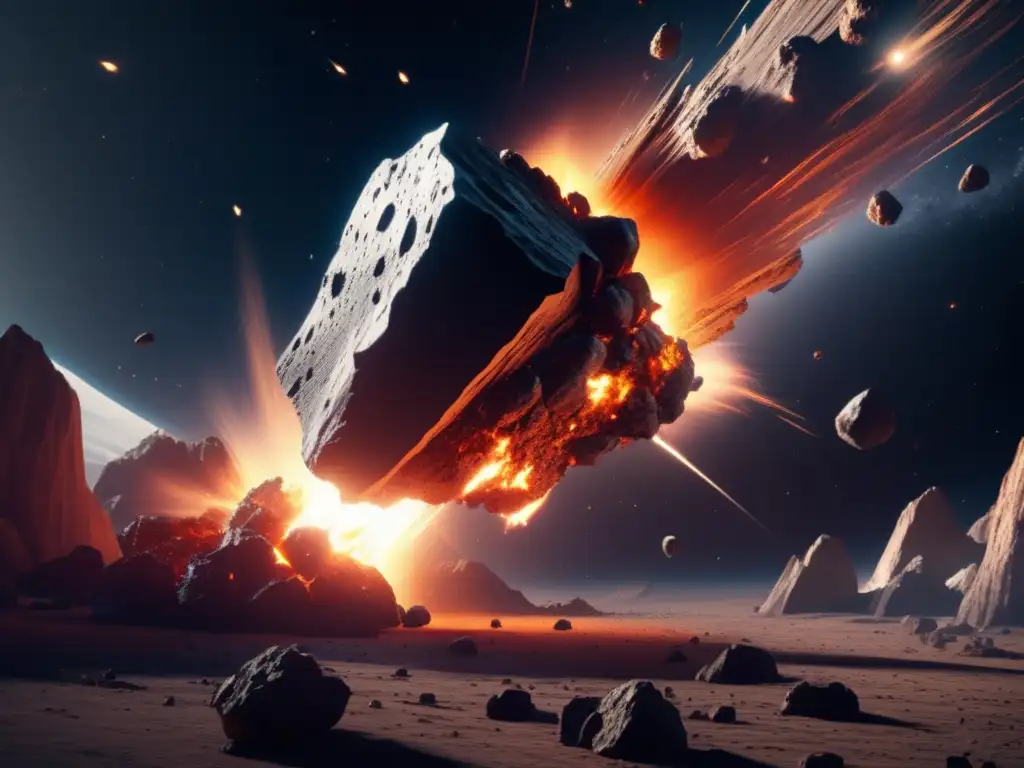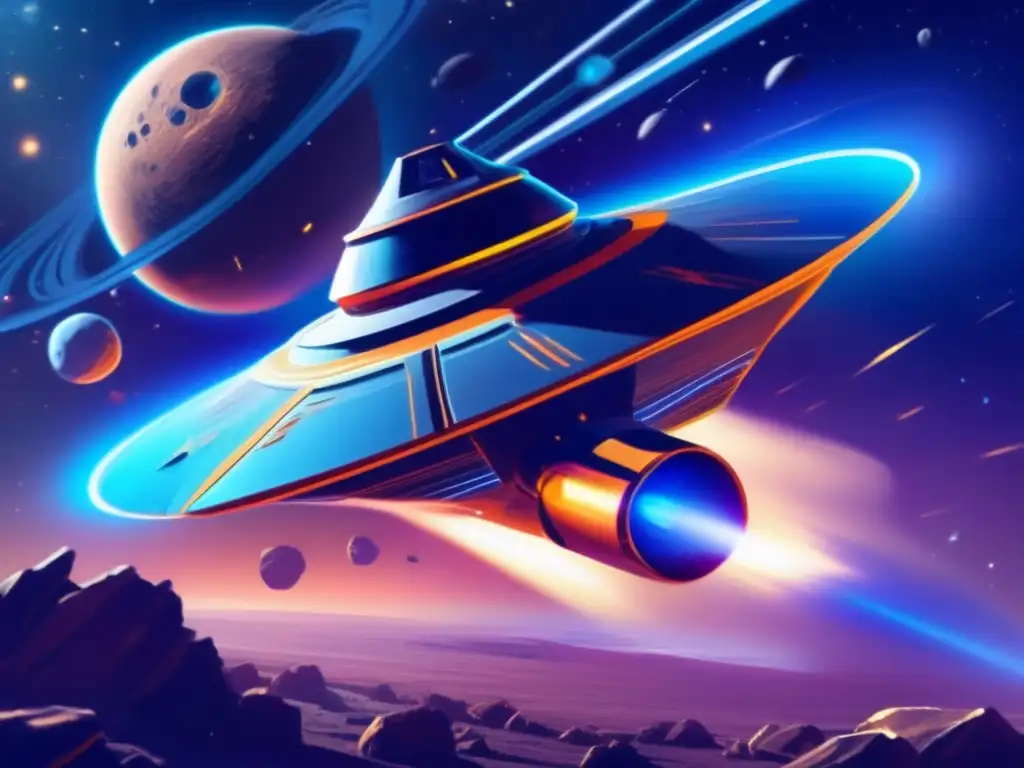Between Us And Destruction: Modern Asteroid Defense Strategies

Introduction
Asteroids have been a source of concern for humanity for centuries. They are remnants of the early Solar System that orbit the Sun in the asteroid belt, among other locations. While most asteroids pose no threat to Earth, some have the potential to collide with our planet and cause catastrophic damage.
In fact, the last major asteroid impact occurred approximately 66 million years ago, when a 10-kilometer-wide asteroid slammed into what is now Mexico. This event caused the extinction of dinosaurs and many other species on Earth.
Since then, scientists have been studying asteroids and developing various strategies to prevent them from colliding with our planet. In this article, we will discuss modern asteroid defense strategies.
NASA's Planetary Defense Coordination Office

Overview
The Planetary Defense Coordination Office (PDCO) is a unit of NASA's Planetary Science Division. Its primary goal is to detect, track, and characterize near-Earth objects (NEOs) that could pose a threat to our planet. The PDCO coordinates efforts between NASA, other agencies, and international partners to develop strategies to mitigate the risks associated with these objects.
NEO Observations
The PDCO uses various ground-based telescopes, as well as the NEOWISE spacecraft, to observe and track NEOs. These observations allow scientists to determine an object's size, shape, rotation, and trajectory. With this information, they can predict whether an NEO will come close enough to Earth to pose a threat.
Planetary Defense Technologies
The PDCO has several technologies and strategies in place to prevent asteroid impacts. One such strategy is the use of a kinetic impactor, which involves redirecting the asteroid's path by hitting it with a spacecraft. Another technique is the gravity tractor, which uses a spacecraft to hover near an asteroid and exert a gravitational force on it, causing it to deviate from its original trajectory.
B612 Foundation Asteroid Institute

Overview
The B612 Foundation Asteroid Institute is a non-profit organization that is dedicated to the study and defense against asteroids. It was founded in 2002 by a group of astronauts, scientists, and engineers.
Asteroid Detection
The B612 Foundation Asteroid Institute uses the latest telescopes and algorithms to detect and track asteroids. They also use data from NASA and other organizations to improve their models and predictions.
Asteroid Deflection
The B612 Foundation Asteroid Institute has proposed several methods for deflecting asteroids. One such method is the use of a gravity tug, which involves using a spacecraft to fly alongside an asteroid and gradually pull it off course. Another approach is to use a laser to vaporize material from the asteroid, creating a small but constant force that would alter its trajectory.
International Asteroid Warning Network

Overview
The International Asteroid Warning Network (IAWN) is a collaboration between space agencies, observatories, and research institutions from around the world. Its primary goal is to coordinate efforts to detect and track asteroids that could pose a threat to Earth.
Data Sharing
The IAWN facilitates global cooperation by sharing data and information about asteroids. This enables scientists to combine observations from different parts of the world and improve the accuracy of their predictions.
Asteroid Mitigation
The IAWN works closely with other organizations, such as NASA's PDCO, to develop strategies for mitigating the risks associated with NEOs. These efforts include the development of new technologies and the testing of existing ones.
Frequently Asked Questions
![Urgent Defense: Photorealistic Asteroid Image []- A massive asteroid looms in space, over two-thirds the size of Earth](/wp-content/uploads/asteroid-letting-moonlight-through-text-51_2.webp)
-
What is the difference between an asteroid and a meteor?
Asteroids are rocky objects that orbit the Sun, while meteors are asteroids or other objects that enter Earth's atmosphere and burn up.
-
How do scientists detect and track asteroids?
Scientists use ground-based telescopes and spacecraft to observe and track asteroids. They analyze an object's size, shape, rotation, and trajectory to determine whether it poses a threat to Earth.
-
What would happen if a large asteroid hit Earth?
A large asteroid impact could cause widespread destruction and loss of life. The effects would depend on the size and speed of the asteroid, as well as where it hit.
-
What is a gravitational keyhole?
A gravitational keyhole is a region in space that, if an asteroid were to pass through it, would cause it to collide with Earth on a future orbit.
-
Can we prevent all asteroid impacts?
No, it is not possible to prevent all asteroid impacts. However, through the efforts of organizations like NASA's PDCO and the B612 Foundation Asteroid Institute, we can reduce the risks and mitigate the effects of potential impacts.
Conclusion
Asteroids pose a real threat to our planet, but we have made significant progress in developing strategies to prevent impacts. Organizations like NASA's PDCO, the B612 Foundation Asteroid Institute, and the International Asteroid Warning Network are working tirelessly to detect, track, and mitigate the risks associated with NEOs. By investing in asteroid defense technologies and international cooperation, we can ensure that we are prepared for any potential threats in the future.
Thank you for reading this article, and we encourage you to share your thoughts on asteroid defense in the comments section below. Don't forget to subscribe to www.asteroidrealm.com for more articles and resources on all things related to asteroids.
Additional Resources

- NASA Planetary Defense Coordination Office
- B612 Foundation Asteroid Institute
- International Asteroid Warning Network
 Defending The Blue Planet: Current Strategies Against Asteroids
Defending The Blue Planet: Current Strategies Against Asteroids Hold The Line: Techniques For Preventing Asteroid Collisions
Hold The Line: Techniques For Preventing Asteroid Collisions Battle For Survival: The State Of Planetary Defense
Battle For Survival: The State Of Planetary DefenseIf you want to discover more articles similar to Between Us And Destruction: Modern Asteroid Defense Strategies, you can visit the Planetary Defense category.
Leave a Reply

Articulos relacionados: